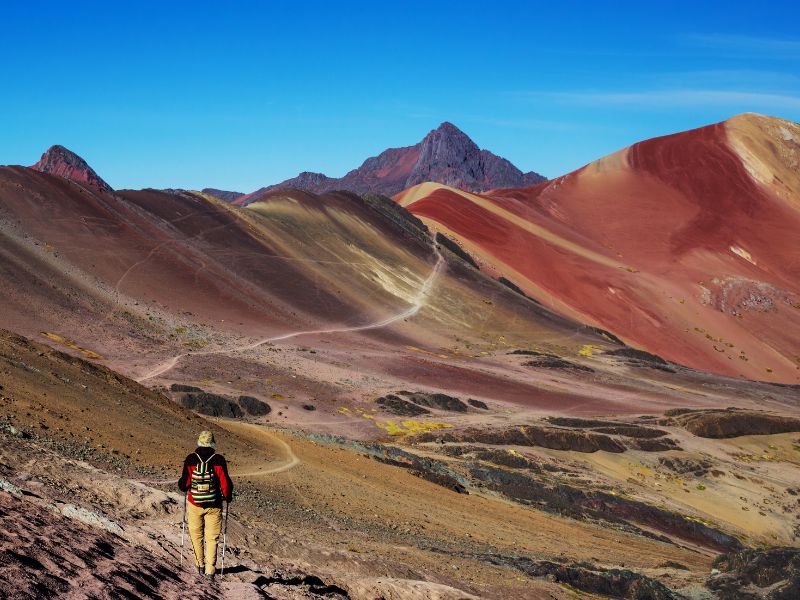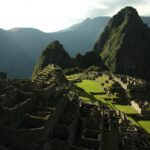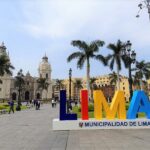Are you planning a trip to Machu Picchu and Cusco and want to know when the dry season is in Peru?
Also, is the dry season the best season to travel anywhere in Peru? Are there any disadvantages to traveling in the dry season?
Let’s take a look at everything you need to know about the dry season.
The Seasons in Different Parts of Peru
First of all, you should know that not everywhere in Peru people use the distinction between dry season and rainy season.
This is a distinction that is used in the highlands (meaning the Andes region) and in the jungle. But not on the coast.
In the highlands and jungle the dry season and the rainy season are very marked.
Over there, the dry season is from April to October. During the dry season, skies are clear, and days are sunny.
Because of the weather, the dry season is the best time of the year to visit places in the highlands, like Cusco, Machu Picchu and Arequipa. It’s the best time for hiking, especially if you are doing the Inca trail or do a multi-day hike in Huaraz.
On the other hand, the coast of Peru is a desert, and it basically never rains. In the Northern coast it may rain if there is El Niño going on, which happens every few years. But in Lima, and in the South, it never rains. It might drizzle a bit, but never enough to make your clothes wet.
This is the reason why if you travel on the coast by bus, the landscape will be very monotonous. Just the sea and the desert. This is also the reason why there’s not a lot of nature in Lima city and why there are no big parks.
That’s why on the coast people just talk about the four seasons. Peru is in the Southern hemisphere, so Summer is from December to March, Autumn from March to June, Winter from June to September, and Spring from September to December.
Average Temperatures During the Dry Season

The temperatures during the dry season are colder than during the rainy season.
So even though the skies will be clear and the weather will be great for being outdoors, you have to pack warmer clothes. Especially for the morning and night, when it gets colder.
In the highlands, like Cusco, Machu Picchu or Arequipa, the average temperature during the day is between 18°C and 25º C (between 65°F and 77ºF). At night, it is around -5°C and 5°C (between 23°F and 41º F).
Pros of Traveling to Peru During the Dry Season

- The dry season is the best time for hiking the Inca trail and doing outdoors excursions in general.
- You will get much nicer views of the landscapes. Especially great views of places like Machu Picchu, which can otherwise be foggy, or of the Rainbow Mountain, which sometimes has some snow covering its colors in the rainy season.
- The staircases in Machu Picchu are less humid and not slippery, so there is less risk of accidents.
- There’s no risk (or much less risk) of roads being blocked by landslides.
- Even if the days are colder on average, in the highlands, when the sun is shining it’s warm. Especially in the afternoons it’s likely that you won’t need any warm clothes. A T-shirt will be enough.
- If you travel during the dry season, your trip to Cusco might coincide with the Inti Raymi, a Peruvian festival that takes place in June. It’s a major celebration dedicated to the Sun, which was the god of the Incas.
- If you are planning a trip to the jungle, an advantage is that the water level of the rivers will be lower. This gives more opportunities for walking on paths that are otherwise flooded.
- The dry season is a great time for birdwatching in the jungle. It coincides with the season where you will see the migratory birds.
- There will be less mosquitoes in the jungle.
Cons of Traveling to Peru in the Dry Season
- If you will spend time in the coast, realize that it will be winter. It will be cold during the day, the sky will be permanently grey and not sunny (the summer months are the nicest time to visit Lima).
- There is no heating system in the houses, hotels, or restaurants in Peru. You might get a portable heater in your hotel room in the highlands though.
- In August, there can be a lot of wind in the afternoons.
- There will be more mosquitoes in Machu Picchu.
- The dry season is the high season in Peru. So it will be more crowded in the popular attractions, like Machu Picchu.
- Since it’s high season, prices are higher.
- Because of the high amount of tourists you will need to plan very much in advance. You might need to buy your entry ticket to Machu Picchu months in advance (by the way, you can buy your ticket to Machu Picchu here).
Recommendations if you Travel to Peru in the Dry Season

The best month to travel to Peru is May. May is part of the shoulder season, after the rainy season is over but you still get to see the greenery in the landscapes. But at the same time, it’s not high season yet, so you will be there before the crowds arrive.
Even if it’s the dry season, that doesn’t mean that it can’t occassionally rain. So just in case, pack accordingly.
Hotel and flights can be especially expensive around the 28th and 29th of July, which are National holidays (plus, people usually take extra days off). There will be less hotel availability, so book in advance.
Final Thoughts
If you are planning to go hiking in Peru, then dry season is absolutely the best time to visit. On the other hand, if hiking is not on your plans, then it really doesn’t matter in which season you travel.
I have traveled several times to the highlands and jungle in both in the dry and rainy season. For me, the rainy season hasn’t been a big deal at all. If I don’t plan to go hiking, I would not plan my trip around any specific season.
During the rainy season it usually doesn’t rain the whole day, just a couple of hours here and there. When it does, you can visit a museum, sit in a cafe or relax at your hotel.
And if you only plan on visiting Lima or other places in the coast, don’t pay attention to the dry nor rainy season. Just think about if you want to visit in summer or winter. If you are confused about what clothes to bring to Lima, take a look at this post about what to wear in Lima, month-by-month.






